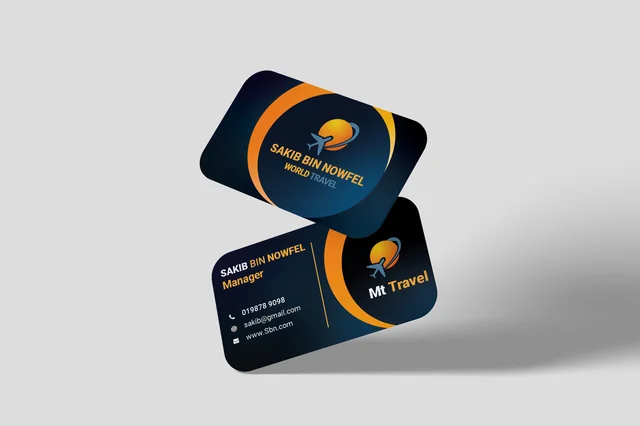Photoshop, a powerhouse in the world of digital design and editing, is renowned for its versatility and comprehensive toolkit.
Whether you’re a professional designer, photographer, or hobbyist, Photoshop offers a myriad of applications that can elevate your work.
Here, we delve into the top seven uses of Photoshop, exploring the need, usage, and effectiveness of this indispensable software.
1. Photo Editing and Retouching
Usage: Photoshop excels in photo editing, offering tools for basic adjustments like cropping, resizing, and color correction, as well as advanced features for retouching and restoring images.
Need: Photographers and graphic designers rely on photo editing to enhance image quality, correct imperfections, and create visually stunning compositions.
Effectiveness: With its vast array of brushes, filters, and adjustment layers, Photoshop allows for precise control over every aspect of an image. The software’s non-destructive editing capabilities ensure that original images remain intact, enabling endless experimentation without risk.
2. Graphic Design
Usage: Photoshop is a go-to tool for creating everything from logos and business cards to posters and web graphics. Designers use it to blend text and imagery seamlessly, apply effects, and create visually appealing layouts.
Need: Effective graphic design is essential for branding, marketing, and communication. A well-designed visual can attract attention, convey a message, and leave a lasting impression.
Effectiveness: Photoshop’s robust tools for layering, masking, and blending provide designers with unparalleled flexibility. The software’s integration with other Adobe products enhances workflow efficiency, allowing for the creation of cohesive and professional designs.
In the Photoshop Class at Intellisoft, you learn how to create a professional looking name card, step by step.
3. Digital Painting and Illustration
Usage: Artists use Photoshop for digital painting and illustration, utilizing its extensive brush library, customizable tools, and pressure-sensitive features compatible with graphics tablets.
Need: Digital painting and illustration are essential for creating original artwork, concept designs, and detailed illustrations for various media, including books, games, and animations.
Effectiveness: Photoshop’s brush engine mimics traditional painting techniques, offering artists a familiar yet enhanced creative experience. Layers and blending modes allow for complex compositions, while features like symmetry painting and pattern creation streamline the process.
4. Web Design
Usage: Web designers use Photoshop to create website layouts, UI elements, and web graphics. The software’s ability to work with grids and guides helps in designing responsive layouts.
Need: A visually appealing and user-friendly website is crucial for online presence and engagement. Photoshop aids in creating designs that are both aesthetically pleasing and functional.
Effectiveness: Photoshop’s slicing tool and export options facilitate the transition from design to development. The ability to create and edit vector shapes ensures that graphics remain sharp and scalable, a critical factor for responsive web design.
Website Design Course: And if you want to design your own website, you can learn how to design and develop your own WordPress Website from scratch, without any coding or Programming. Join our WSQ Funded Web Design Course at Intellisoft.
5. 3D Modeling and Texturing
Usage: Photoshop includes tools for creating and editing 3D models and textures, allowing designers to visualize and render 3D objects within the software.
Need: 3D modeling and texturing are essential in fields like gaming, animation, and product design. Accurate textures and models enhance realism and engagement.
Effectiveness: Photoshop’s 3D capabilities, combined with its texturing tools, enable artists to paint directly onto 3D models, apply realistic textures, and render scenes. This integration streamlines the workflow for artists who need to create both 2D and 3D assets.
Adobe Photoshop or Adobe Illustrator: If you are thinking whether you should learn Photoshop or Illustrator, you can make a decision here.
| Training Schedule | |
|---|---|
| 26 Apr 2025, 10, 17 May 2025 | |
| 28, 29, 30 Apr 2025 | |
| 28, 29, 30 May 2025 | |
| 14, 21, 28 Jun 2025 | |
| 23, 24, 25 Jun 2025 | |
6. Typography and Text Effects
Usage: Designers use Photoshop to create custom typography and text effects for various media, including posters, advertisements, and digital content.
Need: Effective typography enhances readability and visual appeal, making it a vital component of graphic design and communication.
Effectiveness: Photoshop’s text tools allow for precise control over font attributes, spacing, and alignment. Layer styles and effects enable the creation of eye-catching text treatments, from 3D effects to textured lettering, enhancing the overall design.
Typography in Slide Design is also important: If you are designing Corporate Slides, you must learn the art of Creating Killer Slides in PowerPoint.
Also Master the Art of Making Stellar Business Presentation Delivery.
7. Photo Manipulation and Compositing
Usage: Photoshop is unparalleled in photo manipulation and compositing, allowing users to combine multiple images into a single, cohesive composition.
Need: Photo manipulation is used in advertising, entertainment, and art to create surreal images, special effects, and composite scenes that wouldn’t be possible in reality.
Effectiveness: Photoshop’s advanced selection tools, layer masks, and blending modes enable seamless integration of different elements. The software’s content-aware features and healing tools facilitate the creation of realistic composites, making it a powerful tool for visual storytelling.
Conclusion
Photoshop’s versatility and comprehensive toolkit make it an essential software for a wide range of creative and professional applications. From photo editing and graphic design to digital painting and 3D modeling, Photoshop offers the tools and flexibility needed to turn ideas into reality. By mastering Photoshop, users can unlock their creative potential, producing high-quality, professional results that captivate and engage audiences.
Learn More at Intellisoft
Intellisoft provides comprehensive Photoshop, Illustrator, InDesign Training Courses in Singapore and beyond, where you can learn many more shortcuts, functions, and features of Adobe software. Join our hands-on workshops at our Training Centre at Fortune Centre to enhance your Creative skills and boost your productivity.
Visit Intellisoft for more details and course schedules for our WSQ Funded Creative Courses.
Intellisoft Training | +65-6252-5033 | info@trainingint.com | Whatsapp us at 9066-9991
Seats are limited, and the course fills up quickly. Hurry and sign up today to take advantage of this unique opportunity!
Join over 30+ Courses with WSQ Funding For Your Career Enhancement









